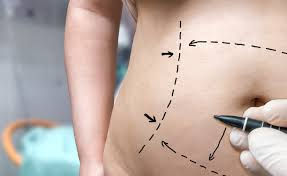What Is Liposuction Surgery and How Does It Work?
- Laraib Naeem
- Oct 3
- 4 min read
Many people often ask, what is liposuction surgery and how does it work? This procedure has become one of the most sought-after cosmetic treatments worldwide because it helps individuals reshape their bodies in a more defined way. Unlike weight loss methods, liposuction is designed to target stubborn fat that does not respond to diet or exercise. Understanding its process, benefits, preparation steps, and outcomes can help those considering it make an informed choice.
What Is Treatment And How It Works?
Liposuction in Dubai(شفط الدهون في دبي) is a cosmetic procedure used to remove localized fat deposits from different body areas. During the process, a thin tube known as a cannula is inserted into the targeted area through small incisions. The cannula is attached to a suction device that removes excess fat cells permanently. This treatment works by contouring the body rather than helping with weight loss. Popular treatment areas include the abdomen, thighs, arms, hips, and chin. The procedure is performed under anesthesia to ensure comfort, and the duration depends on the number of areas being treated.

Importance Of Treatment:
The importance of liposuction surgery lies in its ability to improve body shape and boost confidence. It helps individuals achieve a more proportionate figure by eliminating fat pockets that often create an uneven appearance. While not a replacement for healthy lifestyle choices, this surgery can serve as a complement to diet and exercise by refining results. For many, it is not just about aesthetics but also about restoring balance to body contours, which may improve posture and comfort in clothing. The psychological impact is equally valuable, as many patients report feeling more motivated and self-assured after the procedure.
Types Of Treatment:
Different types of liposuction techniques have been developed to provide more precision and safety:
Tumescent liposuction: The most common method where a saline solution with anesthetic is injected before fat removal.
Ultrasound-assisted liposuction (UAL): Uses ultrasound energy to liquefy fat, making removal easier.
Laser-assisted liposuction (LAL): Applies laser energy to break down fat cells before suction.
Power-assisted liposuction (PAL): Utilizes vibrating cannulas for smoother fat removal with less effort.Each type offers unique benefits depending on the treatment area, skin type, and the patient’s goals.
Preparation And Aftercare:
Preparation for liposuction surgery involves medical evaluation, lifestyle adjustments, and following pre-procedure guidelines. Patients are generally advised to:
Stop smoking and avoid alcohol before treatment.
Disclose any medications or supplements they are taking.
Maintain stable weight for best results.Aftercare is equally critical for recovery and outcome. Common aftercare steps include:
Wearing compression garments to reduce swelling.
Taking prescribed medications for pain and healing.
Avoiding strenuous activity for a few weeks.
Attending follow-up appointments to monitor progress.Full recovery may take several weeks, but results become more visible as swelling decreases.
Ideal Candidate:
The ideal candidate for liposuction is someone who has stubborn fat deposits despite maintaining a healthy diet and regular exercise routine. Candidates should:
Be close to their ideal body weight.
Have good skin elasticity to achieve smooth results.
Be in overall good health without major medical conditions.
Maintain realistic expectations about outcomes.This procedure is not suitable for weight loss or obesity management but rather for body contouring.
How To Choose A Right Clinic?
When deciding on liposuction surgery, choosing the right clinic is one of the most important steps. Patients should look for:
Accreditation and certification of the facility.
Modern equipment and techniques.
Clear before-and-after examples of results.
A supportive and transparent consultation process.Research, reviews, and asking relevant questions can help individuals select the right place to ensure safety and satisfaction.
Risks And Benefits:
Like any surgical procedure, Liposuction Surgery( جراحة شفط الدهون) carries potential risks. Common risks may include bruising, swelling, temporary numbness, and irregular skin contour. Rare complications such as infection or excessive bleeding may occur if proper care is not followed. On the other hand, the benefits often outweigh these risks for suitable candidates. Benefits include improved body contour, long-lasting fat removal, enhanced confidence, and better fitting of clothes. The procedure offers permanent removal of fat cells, provided that a healthy lifestyle is maintained afterward.
FAQs:
Is liposuction painful?
Discomfort is managed with anesthesia and pain medication during recovery.
How long does recovery take?
Most patients can resume normal activities within a few weeks, though full results appear after swelling reduces.
Does fat come back after surgery?
Removed fat cells do not return, but remaining fat cells can enlarge if lifestyle habits are not maintained.
Can liposuction help with weight loss?
No, it is designed for body contouring rather than weight reduction.
Which areas can be treated?
Common areas include abdomen, thighs, arms, hips, flanks, and chin.
Conclusion:
To summarize, liposuction surgery is a cosmetic procedure that reshapes the body by removing stubborn fat cells. It is not a weight-loss method but an effective way to contour and refine body shape. From understanding how it works to learning about types, preparation, aftercare, and risks, individuals can make informed decisions about whether it is the right option for them. By choosing a qualified clinic and maintaining healthy habits afterward, patients can enjoy long-term benefits and enhanced confidence. Ultimately, this procedure remains a popular choice for those asking what is liposuction surgery and how does it work, delivering both aesthetic and psychological satisfaction.



Comments